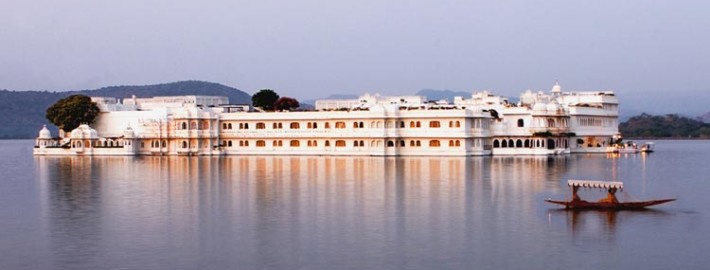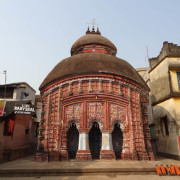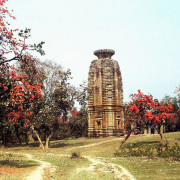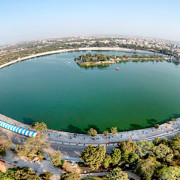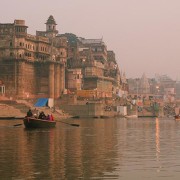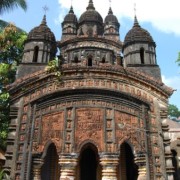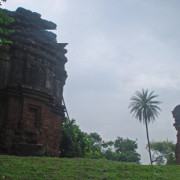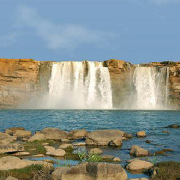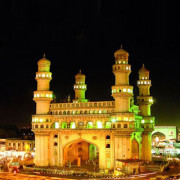Udaipur, Rajasthan – The City of Lakes
Often called the ‘Venice of the East’ Udaipur is the city of lakes and palaces. The city is covered by Aravalli Parvat from all sides. Named after its founder Maharaja Udai Singh, it came into existence in the mid of the 16th century.
The Lake Palace (Jag Niwas) located in the middle of Pichola Lake is the finest example of architectural and cultural marvel. The grand City Palace on the banks of the lake along with the Monsoon Palace (Sajjan Garh) on the hill above enhances the beauty of this magnificent city. Udaipur is also the centre for performing arts, crafts and its famed miniature paintings. The Shilpgram festival is a great crowd-puller on every new year.
Places to see in Udaipur: Udaipur is a mixed bag which multiple tourist spots.
City Palace
City Palace towers over the Pichola Lake. Maharana Udai Singh initiated the construction of the palace but successive Maharanas added several palaces and structures to the complex but retained remarkable uniformity in the design. The entry to the Palace is from the Hati Pol, the Elephant Gate. The Bari Pol or the Big Gate brings you to the Tripolia, the Triple gate. It was a custom to weigh the Maharaja under this gate in gold and silver, which was distributed to the populace. It is also now the main ticket office. Balconies, cupolas and towers of the palace give a wonderful view of the lake. Suraj Gokhada (or the balcony of the sun) is where the Maharana would grant public audiences mainly to boost the morale of the people in trying times. The Mor Chowk is the Hindi name of peacock square and is named after a vivid blue decorative glass peacock on the wall.
The main part of the palace is now preserved as a museum displaying a large and diverse array of artifacts. As we go down the steps from the entrance is the armoury museum exhibiting a huge collection of protective gears and various kinds of weapons including the lethal two-pronged sword. The CityPalace museum is then entered through the Ganesh Deori. This leads to the Rajya Angan or the royal courtyard. This is the spot where Maharana Udai Singh is said to have met the sage who advised him to found a city here. The rooms of the palace are superbly decorated with mirror tiles and paintings. Manak Mahal or the RubyPalace has a lovely collection of glass and mirror work while Krishna Vilas displays a rich collection of miniature paintings. Moti Mahal (the pearl palace) has beautiful mirror work and the Chini Mahal has ornamental tiles all over. The Surya Chopar (the sun square) depicts a huge ornamental sun symbolising the sun dynasty to which the Maharajas and their ancestors belonged. The Bari Mahal is a central garden giving a view of the city. Some more beautiful paintings can be seen in the ‘Zenana Mahal’ (the ladies chamber). Then, there is the Lakshmi Chowk which is a beautiful white pavilion.
The Lake Palace
The Lake Palace is located on Jag Niwas Island and covers the whole area (1.5 hectares) of the island in the middle of the Pichola Lake. Built by Maharana Jagat Singh in 1743, it was meant as a royal summer palace but now has been converted into a five border star palace hotel. Its superb beauty and enduring charm and its reflection in the middle of the lake is like a leaf straight out of a fairy tale book. With intricate craftsmanship and ethnic themes using textiles and handicrafts all over, its beauty is beyond description. The surrounding lake murmurs pleasantly, with her rippling and lapping waves.
Jag Mandir
This is the other island palace on Lake Pichola, which was constructed by Maharana Jagat Singh I in the year 1620AD. It also served as a hideout for Prince Khurram (Shah Jahan), during his revolt against his father, Emperor Jehangir. The prince being the son of a Rajput mother received the royal favour. It is also said that Shah Jahan [Prince Khurram] derived some of the ideas for building the Taj Mahal from architectural beauty of this palace when he stayed here during 1623-24. The island has some striking carvings including a row of elephants that look like guarding the island. The exquisitely carved chhatri in grey and blue stone also attracts the visitors. It is also the place where European families were sheltered by Maharana Sarup Singh during the uprising of 1857 AD.
Lake Pichola
Lake Pichola has two islands, Jag Niwas and the Jag Mandir. This lake is 4 km long and 3 km wide, originally built by Maharana Udai Singh II. There are many ghats, like the bathing and washing ghats, which can be approached through boats from the City Palace of Udaipur (Bansi Ghat). In the heart of the lake the Lake Palace stands, which is now converted into a heritage palace hotel. The lake remains fairly shallow even during heavy rains, and gets dry easily in times of severe drought.
Maharana Pratap Memorial (Moti Magari)
An impressive bronze statue of Maharana Pratap on his favourite horse Chetak, stands atop the Moti Magri (Pearl Mount) overlooking Fateh Sagar. Local people climb up the hill to pay homage to Rana Pratap and his faithful charger ‘Chetak’ who was fiercely protective about its master and stood by him till its last breath. This loyal steed sacrificed its life while carrying his master to safety from the battlefield of Haldighati. The sound and light show held here every evening is worth viewing.
Nearby attractions from Udaipur: Udaipur is adorned by a number of nearby attractions.
Chittaurgarh
Chittaurgarh epitomizes Rajput spirit, valour, pride and romance. It reverberates with heroism and sacrifice the tales of which are still sung by the Bards of Rajasthan. The imposing and awe inspiring fort stands on a 240-hectares site, on 180m high hill that rises rapidly from the plains.
It has one kilometre zigzag ascent to it. The road leads through seven gates to the main gate Rampol (meaning Gate of Ram). On the ascent between the second and the third gate, you see two ‘Chattris’ (cenotaphs) built to honour Jaimal and Kalla heroes of 1568 siege by Emperor Akbar. The main gate of the fort itself is Surajpol (meaning Sun Gate).
According to the legend the construction of the fort was started by Bhim, a Pandav hero of mythological epic Mahabharata. The fort has many magnificent monuments. Even though the fort mostly is in ruins, it stands as an overwhelming reminder of its past history of triumph and tragedy and its walls resonate with unbelievable legend of extraordinary men and women and their equally astounding deeds. Chittaurgarh is connected by both bus and rail. The bus stand and the railway station are located in the new township.
Haldighati
The historical site of Haldighati, situated towards the south west of Nathdwara, witnessed the great legendary battle fought between Maharana Pratap and the mighty Mughal army in 1576 AD. Here stands a cenotaph with delicate white marble columns, which is dedicated to the indomitable Maharana Pratap’s loyal horse, Chetak.
Ranakpur
Beautifully sculptured Jain temples mark the glory of this renowned place. Considered as one of the five holy places for the Jain community, these were created in the 15th century during the reign of Rana Kumbha. These are enclosed within a wall. The central Chaumukha [four faced temple] is dedicated to Adinathji. The temple is an astounding creation of architectural splendor with 29 halls and 1,444 pillars all distinctly carved, no two pillars being alike. Every hall of temple has inconceivable surface carved with equal delicacy. Facing the main temple are the temples -Parasvanath – Neminath with exquisite figure carving which look similar to that of Khajuraho sculptures. Another temple worth visiting is the nearby ‘SunTemple’ dedicated to the ‘Sun God’. The temple has a polygonal wall, richly embellished with carvings of warriors, horses and celestial (Nakshatras, grahs) bodies.The Sun God has been shown riding its vehicle, the chariot. There is a stream of devotees eager for blessings. Ranakpur is known as ‘the tranquil pilgrimage town’. The faultless architecture, intricate carvings, delicate designs neatly chiselled idols, diverse and multiple hues and above all, the ambience of Ranakpur palace is at par with another equally famous group of Jain temples at Mt.Abu- the Dilwara temples. For the tourism buffs a ride to the outskirts like ‘ Sadari’ – ‘Desuri’- ‘Ghanerao’- ‘Narlai’, will be found to be exciting.
Things to do in Udaipur: The erstwhile historical city will greet you with a royal welcome. For the lovers of history, art and culture Udaipur will really seem to be an ideal place.
Best time to visit Udaipur: The best time to visit Udaipur is between the months of September and March.
How to go ?
By Air
The nearest airport in Udaipur is called the Maharana Pratap Airport which is situated about 20 kilometres away from the city center. It is well-connected by air to all major cities in India including Delhi, Mumbai, Kolkata and Jaipur.
By Rail
Udaipur lies on a vast network of rail that connects it to major cities in India such as Jaipur, Delhi, Kolkata, Indore, Mumbai and Kota.
By Road
There is a very well-established bus service network to Udaipur, linking it to several cities like Delhi, Jaipur, Indore, Kota and Ahmedabad, among others.
Where to stay ?
There are numerous hotels in Udaipur. Some options are:
Hotel Kajori:+91-0294-2410501
Hotel Welcome: +91-9831070828
Hotel Tulsi Palace: +91-0294-6450-7178
Magan Palace: +91-0294-2212-7715
Note : Phone numbers given above are according to the information available with us. If you find any contact number/s given above is/are incorrect or not in use, please let us know.

